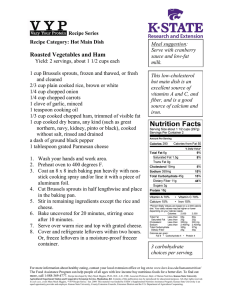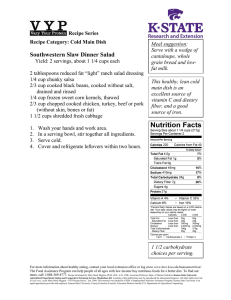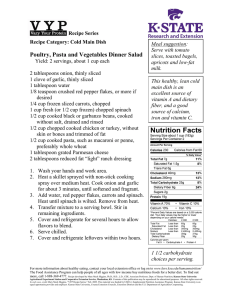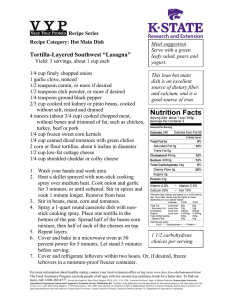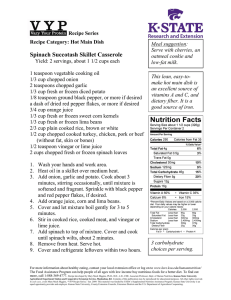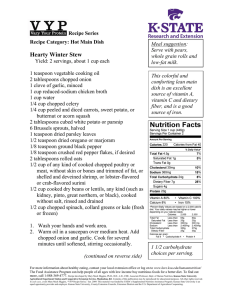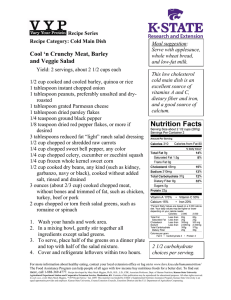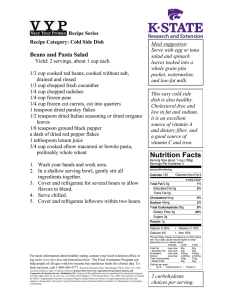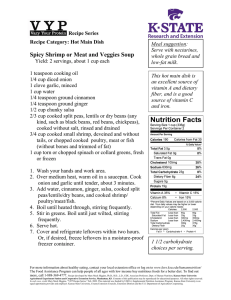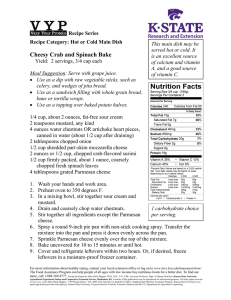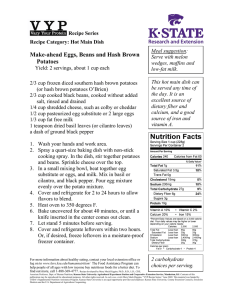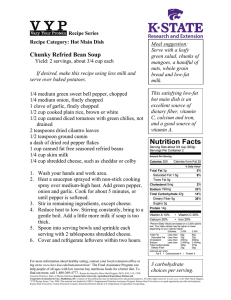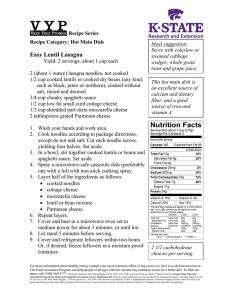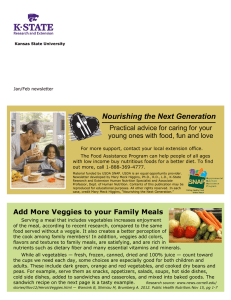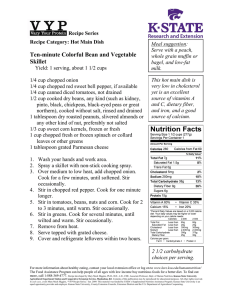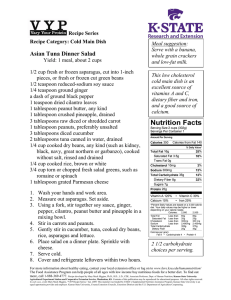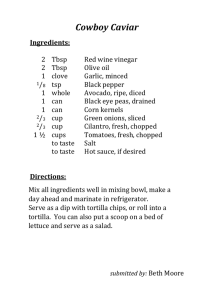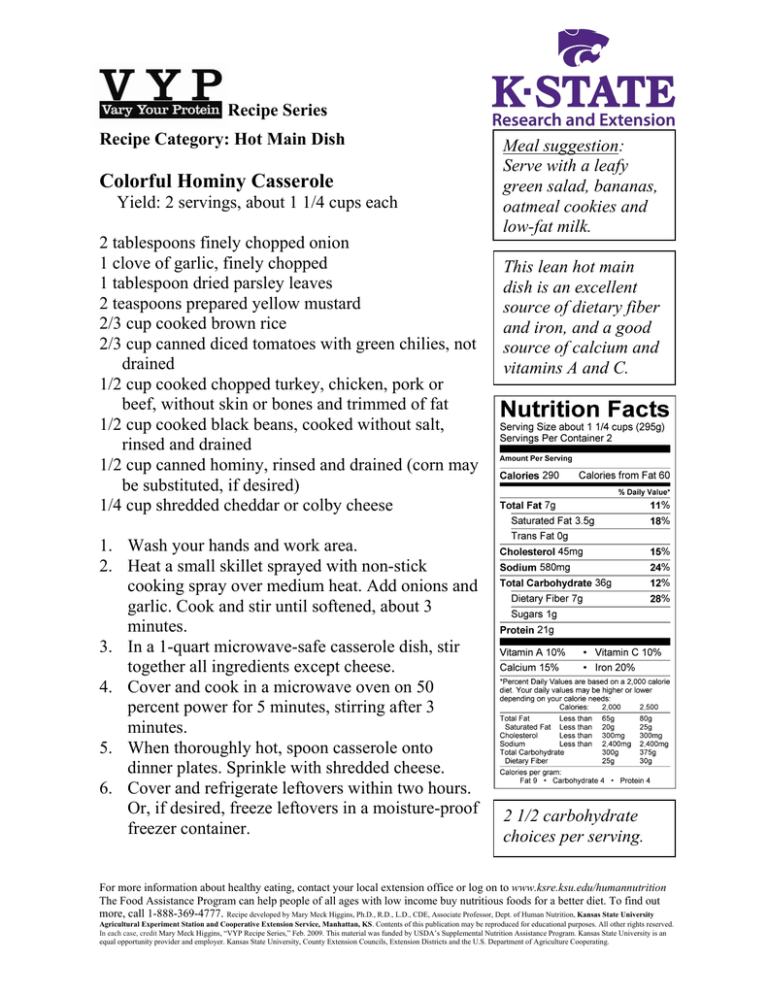
Recipe Series
Recipe Category: Hot Main Dish
Colorful Hominy Casserole
Yield: 2 servings, about 1 1/4 cups each
2 tablespoons finely chopped onion
1 clove of garlic, finely chopped
1 tablespoon dried parsley leaves
2 teaspoons prepared yellow mustard
2/3 cup cooked brown rice
2/3 cup canned diced tomatoes with green chilies, not
drained
1/2 cup cooked chopped turkey, chicken, pork or
beef, without skin or bones and trimmed of fat
1/2 cup cooked black beans, cooked without salt,
rinsed and drained
1/2 cup canned hominy, rinsed and drained (corn may
be substituted, if desired)
1/4 cup shredded cheddar or colby cheese
1. Wash your hands and work area.
2. Heat a small skillet sprayed with non-stick
cooking spray over medium heat. Add onions and
garlic. Cook and stir until softened, about 3
minutes.
3. In a 1-quart microwave-safe casserole dish, stir
together all ingredients except cheese.
4. Cover and cook in a microwave oven on 50
percent power for 5 minutes, stirring after 3
minutes.
5. When thoroughly hot, spoon casserole onto
dinner plates. Sprinkle with shredded cheese.
6. Cover and refrigerate leftovers within two hours.
Or, if desired, freeze leftovers in a moisture-proof
freezer container.
Meal suggestion:
Serve with a leafy
green salad, bananas,
oatmeal cookies and
low-fat milk.
This lean hot main
dish is an excellent
source of dietary fiber
and iron, and a good
source of calcium and
vitamins A and C.
2 1/2 carbohydrate
choices per serving.
For more information about healthy eating, contact your local extension office or log on to www.ksre.ksu.edu/humannutrition
The Food Assistance Program can help people of all ages with low income buy nutritious foods for a better diet. To find out
more, call 1-888-369-4777. Recipe developed by Mary Meck Higgins, Ph.D., R.D., L.D., CDE, Associate Professor, Dept. of Human Nutrition, Kansas State University
Agricultural Experiment Station and Cooperative Extension Service, Manhattan, KS. Contents of this publication may be reproduced for educational purposes. All other rights reserved.
In each case, credit Mary Meck Higgins, “VYP Recipe Series,” Feb. 2009. This material was funded by USDA’s Supplemental Nutrition Assistance Program. Kansas State University is an
equal opportunity provider and employer. Kansas State University, County Extension Councils, Extension Districts and the U.S. Department of Agriculture Cooperating.

